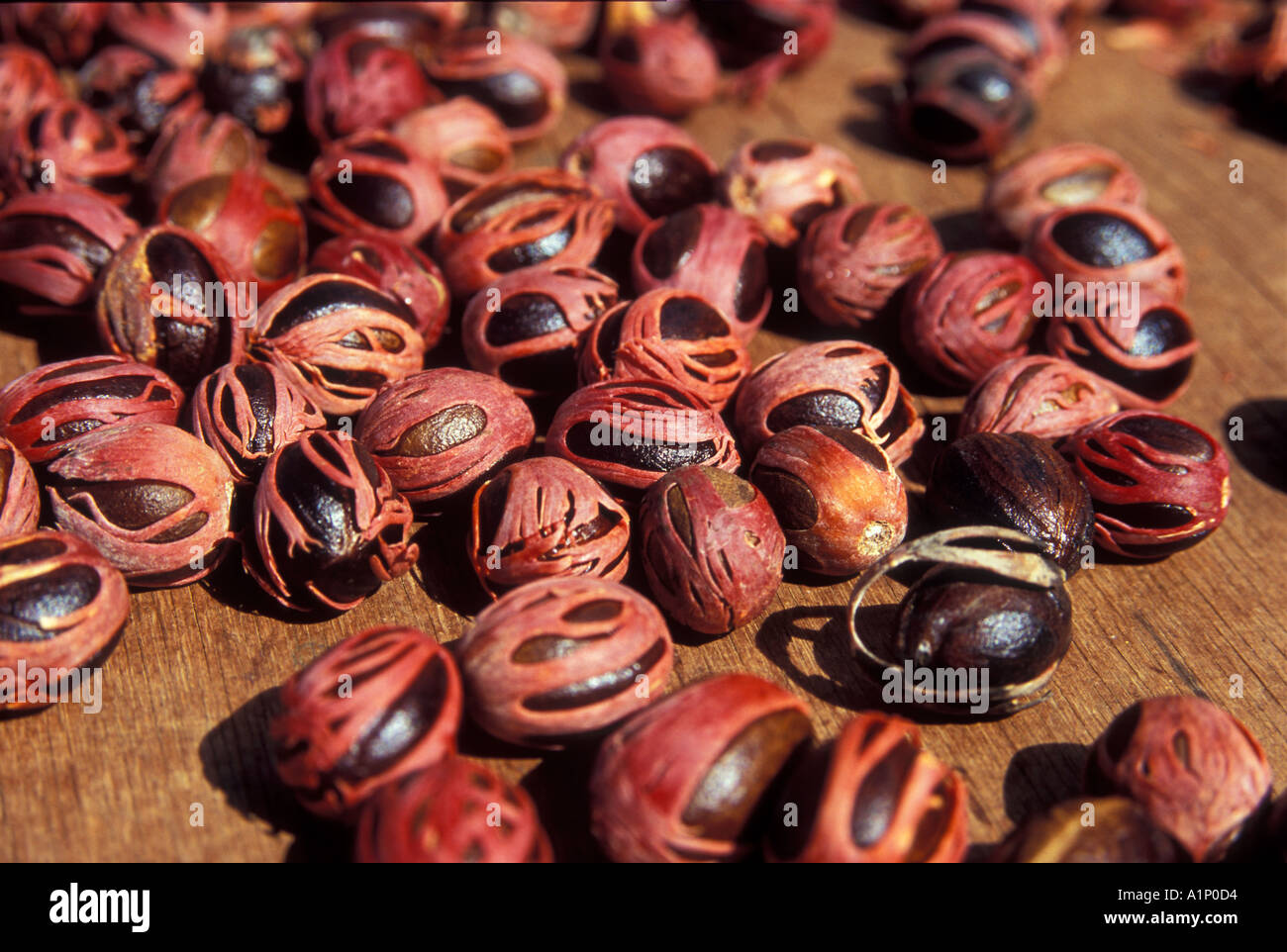Nutmeg and Mace Myristica fragrans Houtt from Seychelles

Image details
Contributor:
Malcolm Wray / Alamy Stock PhotoImage ID:
A1P0D4File size:
66.6 MB (2.4 MB Compressed download)Releases:
Model - no | Property - noDo I need a release?Dimensions:
5890 x 3952 px | 49.9 x 33.5 cm | 19.6 x 13.2 inches | 300dpiDate taken:
2004Location:
SeychellesMore information:
Nutmeg is the actual seed of the tree, roughly egg-shaped and about 20–30 mm long and 15–18 mm wide, and weighing between 5 and 10 grams dried, while mace is the dried "lacy" reddish covering or arillus of the seed. Several other commercial products are also produced from the trees, including essential oils, extracted oleoresins, and nutmeg butter (see below). The outer surface of the nutmeg bruises easily. The pericarp (fruit/pod) is used in Grenada to make a jam called Morne Delice. In Indonesia, the fruit is sliced finely, cooked and crystallised to make a fragrant candy called manisan pala ("nutmeg sweets"). The most important species commercially is the Common or Fragrant Nutmeg Myristica fragrans, native to the Banda Islands of Indonesia; it is also grown in the Caribbean, especially in Grenada. Other species include Papuan Nutmeg M. argentea from New Guinea, and Bombay Nutmeg M. malabarica from India; both are used as adulterants